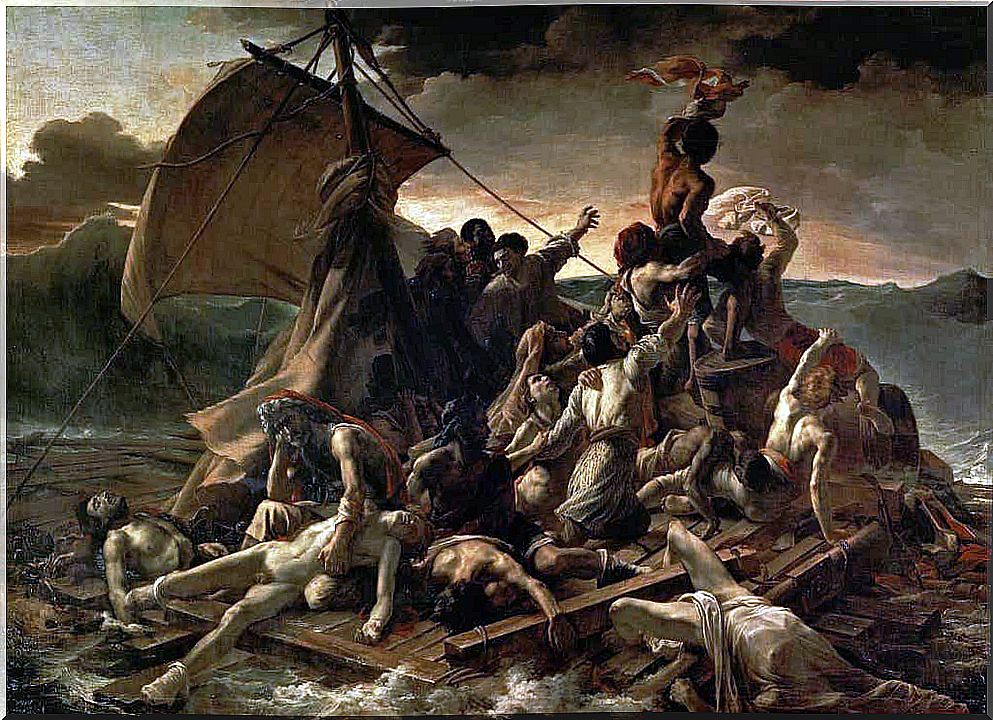Biography Of Théodore Géricault, The Artist Of A Shipwreck

Today we are going to expose a brief biography of Théodore Géricault. Fragile, taciturn and sensitive, he was a painter who had a powerful influence on the Romantic movement in France. He began his career with grand military declarations for Emperor Napoleon.
However, it was his later works, with their emotional brutality and empathy, that captivated audience hearts for generations. His masterpiece, A Balsa da Medusa, has become iconic since the moment it was released.
Unfortunately, Gericault’s death at a young age prevented us from knowing how deep he would be able to dig into the human spirit. Still, the work he left for humanity was very important to Romanticism.

Early years of the biography of Théodore Géricault
Théodore Géricault, or Jean-Louis-André-Théodore Géricault, was born into a middle-class family on September 26, 1791, in Rouen, France. Her parents encouraged Gericault’s artistic inclinations from an early age.
In 1808 he began his apprenticeship with Carle Vernet, a neoclassical painter who shared the young man’s fascination with horses. Gericault was interested in a painting style less rigorous and artificial than neoclassical works. At that time, the teaching method was aimed at imitating masterpieces.
Gericault began working in Pierre-Narcisse Guerin’s studio, where he met another brilliant young Frenchman, Eugène Delacroix. The two formed an enduring friendship of mutual admiration and founded the art movement known as Romanticism.
the start of your career
Géricault became involved in politics with his work A Balsa da Medusa . Considered his romantic masterpiece, A Balsa da Medusa was launched in 1818.
This painting represents a tragic event in French history: the sinking of the French ship Medusa during the year 1816. The wreck had huge political implications in France.
The incompetent captain earned his position through connections to the Bourbon restoration government. At the time of the shipwreck, he fought to save his own life and those of other base officers, but left the weakest to their own devices.
The shipwreck occurred due to the negligence and selfishness of the officers on board. Thus, Gericault’s painting represented a declaration of hostility. The work’s macabre realism, its treatment of the incident as an epic-heroic tragedy, and the virtuosity of its drawings and shadows took the work far beyond the mere reporting of the incident.
The portrait of the dead and dying is developed within a carefully constructed and dramatic composition. In this way, A Balsa da Medusa approached a theme of the time with a remarkable and unprecedented passion.
Thanks to this work, the artist polarized criticism and established himself as a young face in the pictorial scene. With the strength of this painting and other lithographs, Géricault toured England from 1820 to 1822, gaining fame and fortune.

Later years: painting madness
Upon returning to France, the artist executed a well-received series of ten paintings depicting various types of madness. He traveled to the Salpêtrière asylum in Paris and painted portraits of the residents with poignant precision.
The series of ten portraits, entitled Monomania , was commissioned by psychiatrist Étienne-Jean Georget. It has been suggested that Georget, chief physician at the Salpêtrière, a Parisian asylum, treated Gericault himself for an unbearable melancholy.
The physician’s intention was to classify mental patients. To that end, he ensured that each portrait in the series was unified in terms of chromaticity, composition and scale. This series was considered a bridge between romantic art and 19th century empirical science.
Theodore Géricault suffered from tuberculosis, but this disease would not be responsible for taking him to the grave. He died after a long period of suffering due to a riding accident.
At the time of his death, he was 32 years old and at the height of his career. His work influenced other romantic painters and artists in the following centuries.









